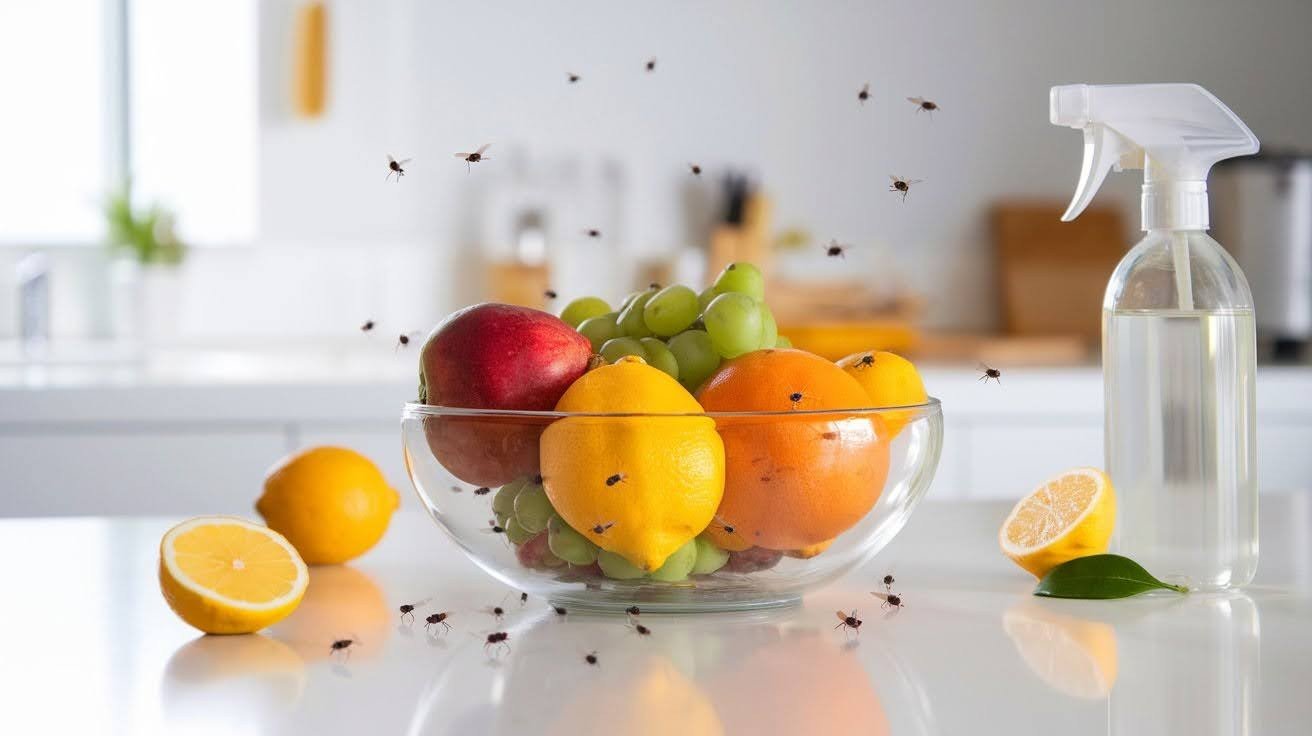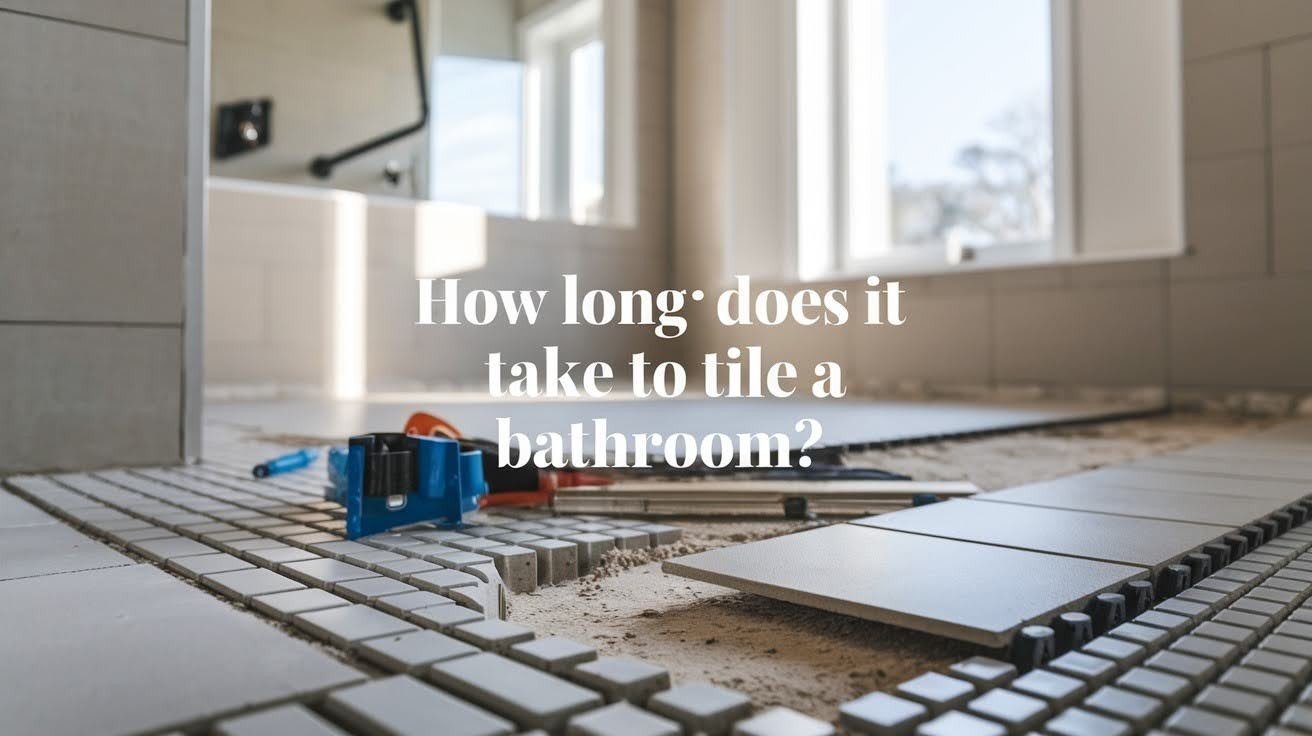Those tiny flying bugs buzzing around your kitchen? I’ve been there. After testing countless methods in my own kitchen, I know what actually works.
This guide gives you proven solutions to eliminate gnats fast. You’ll learn simple traps using items you already have, plus cleaning methods that stop them at the source.
Your gnat problem ends today. Let’s get started.
Gnats come to your kitchen for food and moisture. Fruit flies are brown and round, loving ripe fruit. Fungus gnats are black with long legs, preferring plant soil. Drain flies look like tiny moths around sinks. They enter through cracks, windows, or come with new plants.
9 Traps That Work Right Away
Stop chasing gnats around your kitchen. These simple traps bring the fight to them instead.
Apple Cider Vinegar Trap

This trap works because gnats can’t resist the smell of fermenting fruit. I use this method first because it’s cheap and you probably have everything already.
Pour apple cider vinegar into a small bowl, add two drops of dish soap, and cover with plastic wrap. Poke small holes with a toothpick.
You’ll see dead gnats within hours. The smell draws them in, and the soapy water traps them.
Set up multiple bowls if you have gnats in different spots. The soap breaks surface tension, so gnats can’t escape once they land in the liquid.
Red Wine Trap Alternative
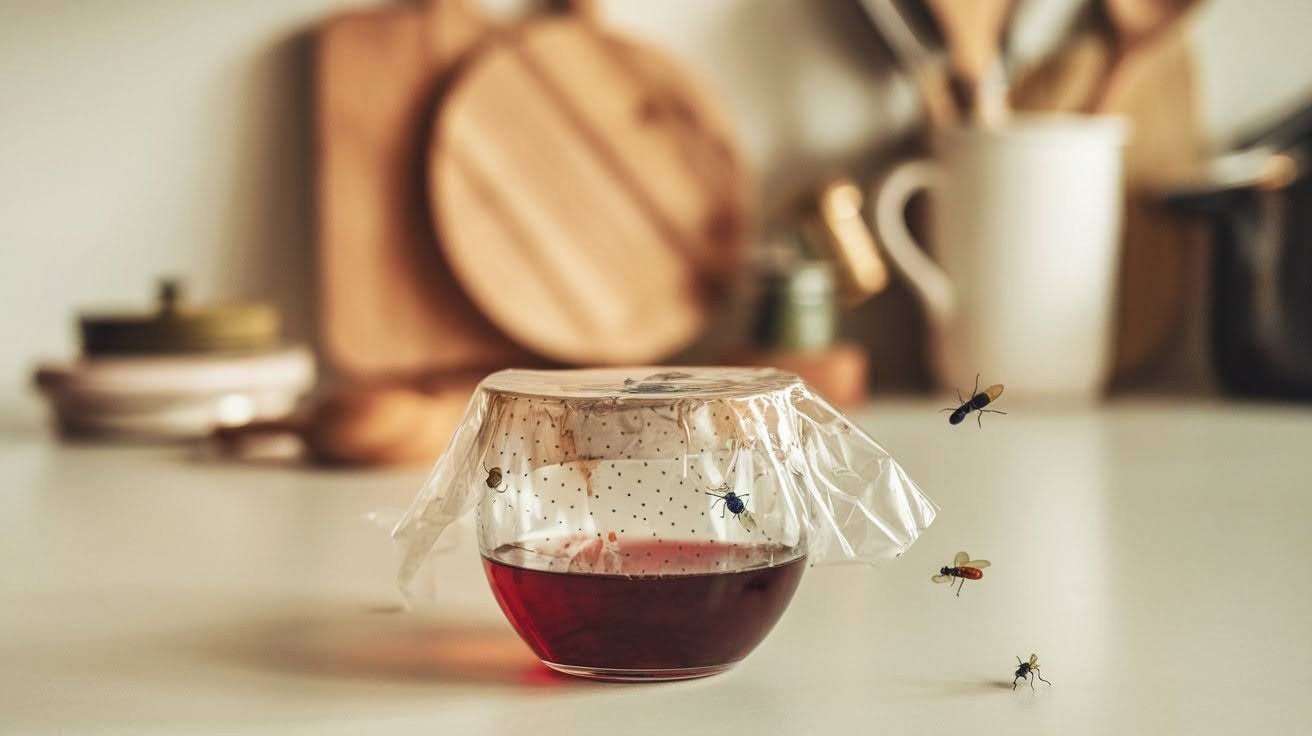
Got old wine that tastes like vinegar? Perfect. Don’t throw it out – use it to catch gnats instead. This works exactly like the apple cider vinegar trap because old wine smells just right to fruit flies.
Set it up the same way with plastic wrap and small holes. The gnats think they found a feast. Use wine that’s been open for weeks and gone sour for the best results.
Overripe Fruit Trap
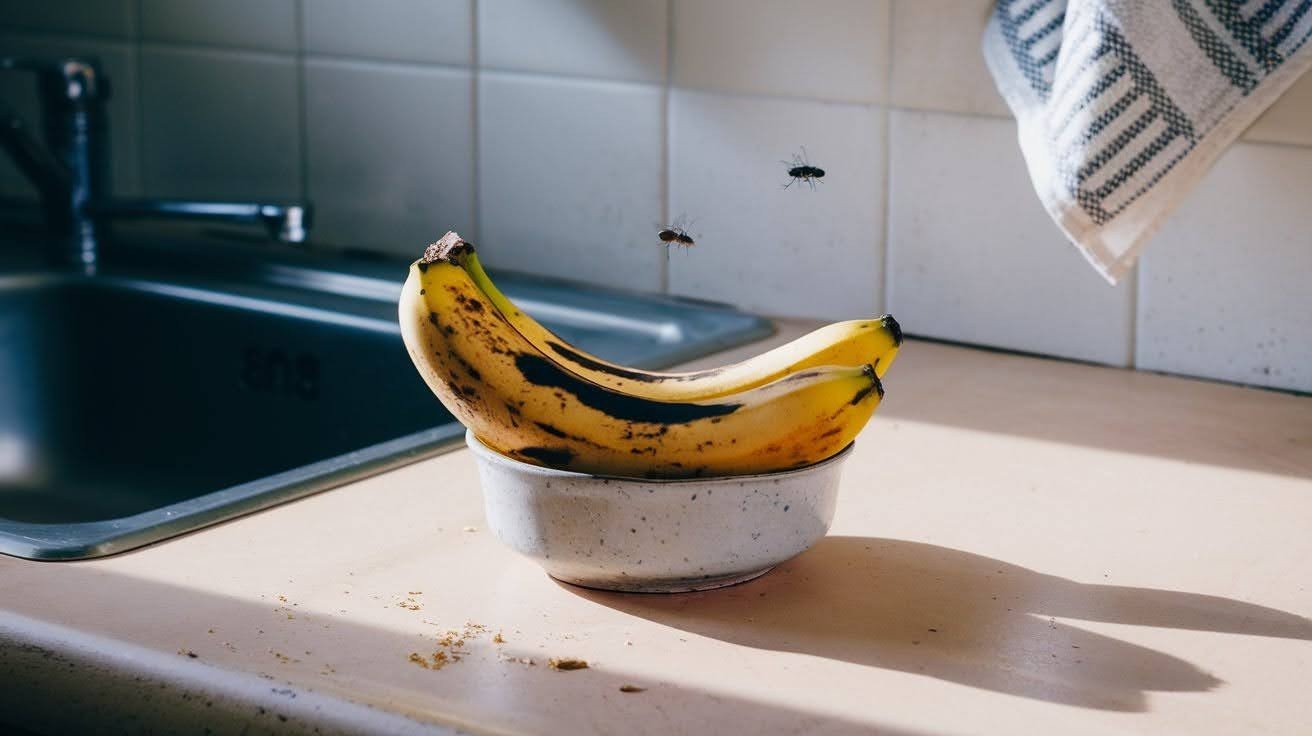
Turn your gnat problem into a solution. Those brown bananas on your counter are perfect bait. Put pieces of overripe fruit in a bowl, cover with plastic wrap, and poke tiny holes just big enough for gnats to enter.
This trap catches lots of gnats fast. The fruit smell is stronger than vinegar, so it works great for heavy infestations. Gnats crawl inside but can’t figure out how to leave through the small holes.
Sticky Traps and Fly Paper
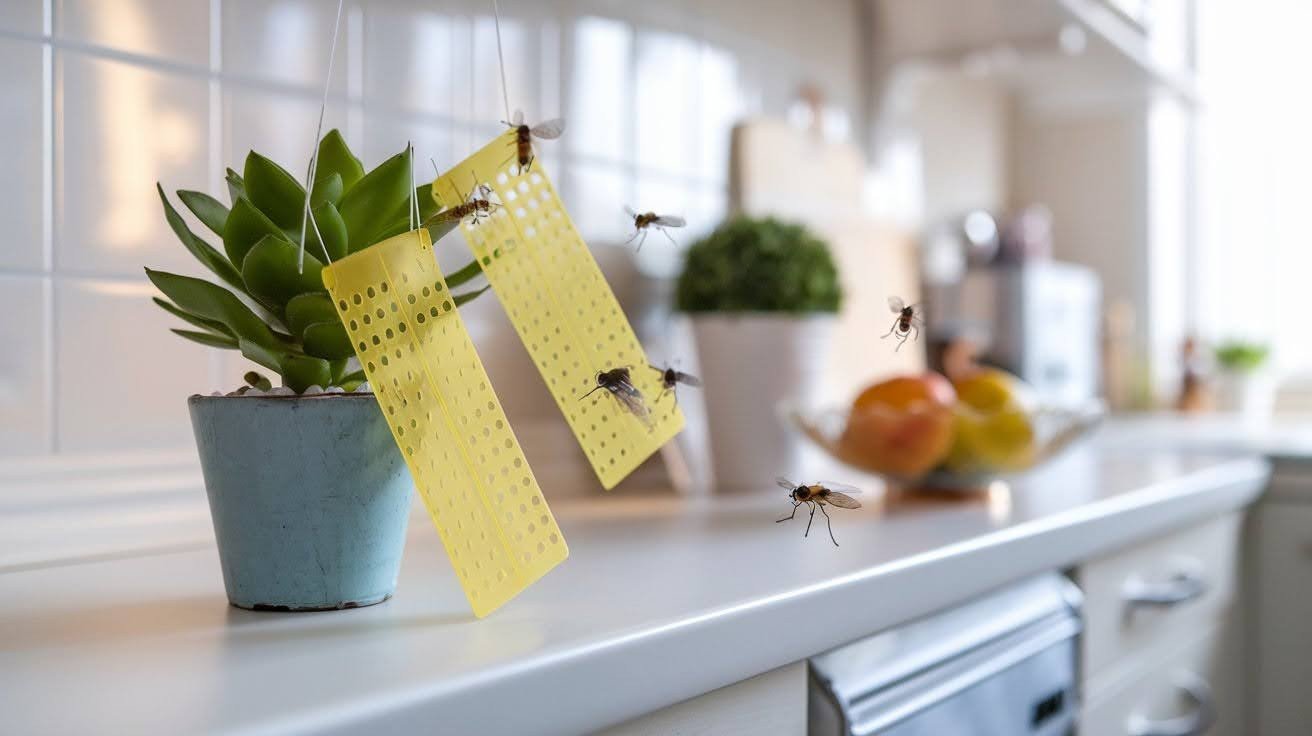
Sometimes the old ways work best. Sticky traps catch gnats without any mixing or setup. You can buy plug-in traps that look like night lights for wall outlets near problem spots.
Yellow sticky cards work great for plant gnats. Push them right into the soil of infected plants. These traps work while you sleep with no maintenance needed except changing when full.
Scents That Push Gnats Away

Cinnamon is your secret weapon. I sprinkle it right into my trash can and around fruit bowls. Gnats hate the smell and stay away.
Other scents like peppermint, lemon, and eucalyptus also make gnats uncomfortable when used on cotton balls.
Remember – scents only push gnats away. They don’t kill gnats or stop breeding. Use these with traps and cleaning for the best results. Replace scented cotton balls every few days to keep them effective.
Light and Heat Methods
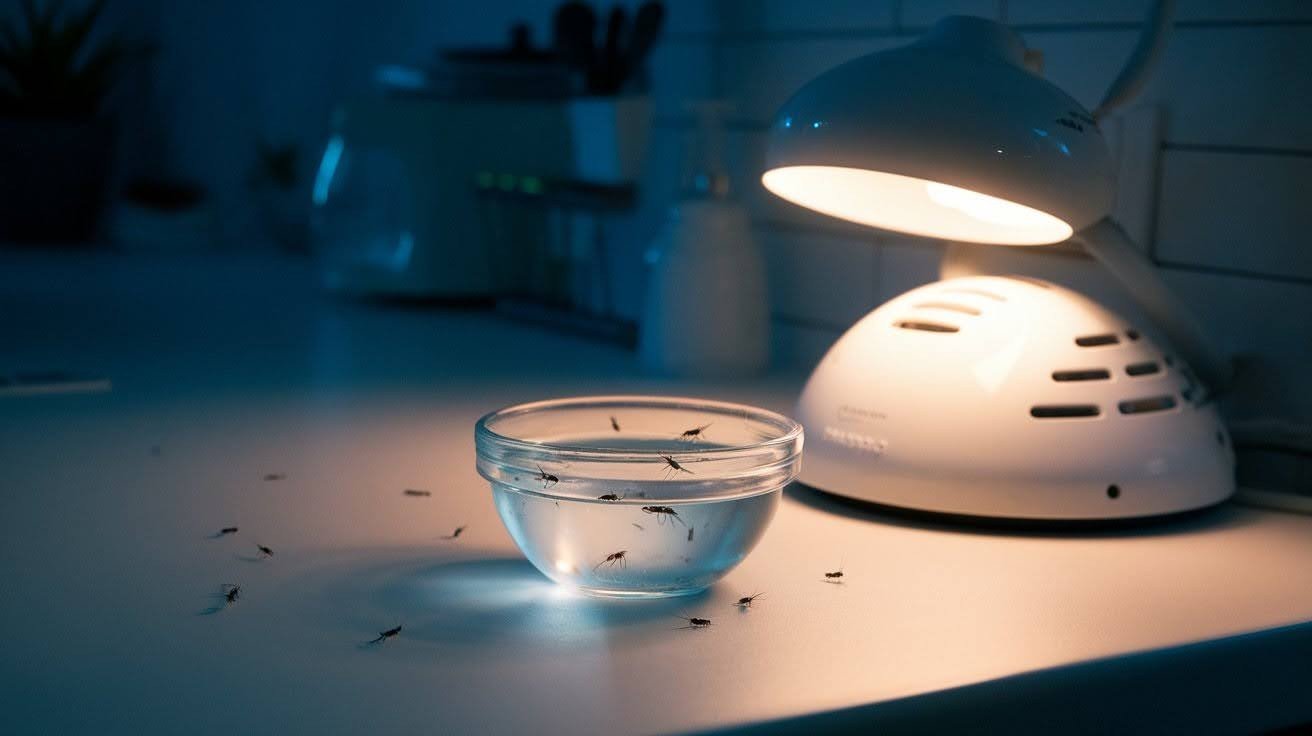
Gnats fly toward light. You can use this against them with simple candle traps. Put a candle in a shallow bowl, add water around the base with dish soap, and light it at night when gnats are active.
Bug zappers work great indoors now. New models are quiet and safe for kitchens. The electric mesh kills gnats instantly when they touch it. Clean out dead bugs regularly, or the smell attracts more gnats.
Kitchen Habits to Stop Future Problems
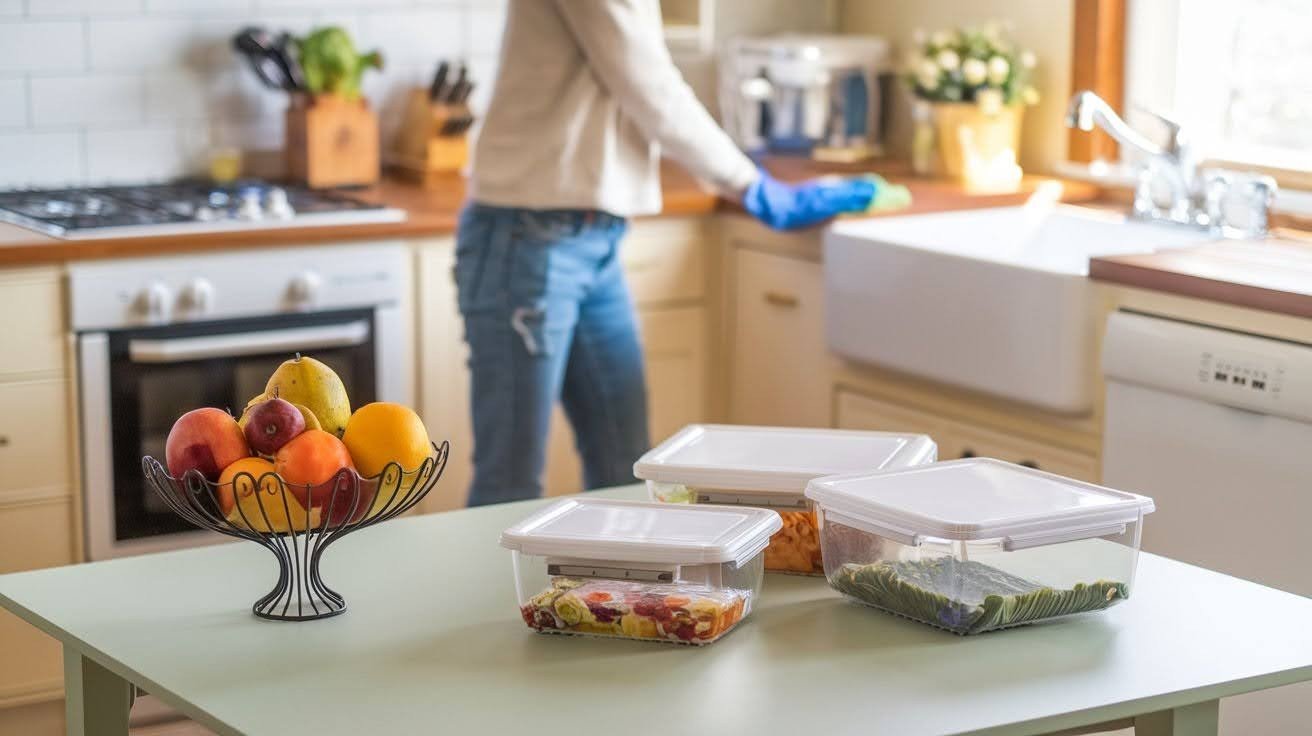
Clean spills right when they happen. That sticky spot under the coffee maker is a perfect gnat breeding ground. Don’t leave dirty dishes in the sink overnight because food particles attract gnats fast.
Take out the garbage every night, especially in summer. Keep fruit in the fridge instead of on counters.
I know it looks nice in a bowl, but gnats think it’s a buffet. Sealed containers work too if you want fruit visible on your counter.
Managing Moisture in Your Kitchen

Gnats need water to live and breed. Control moisture, and you control gnats. Fix leaky pipes under the sink because that drip you ignore feeds hundreds of gnats.
Clean up standing water from plant saucers and coffee makers daily. Check new plants before bringing them inside.
Look for tiny flies around the soil. Fungus gnat eggs hide in potting mix from stores, so quarantine new plants for a week to be safe.
Regular Maintenance Tasks

Make gnat prevention part of your weekly routine. A few minutes of cleaning saves hours of gnat-fighting later.
Clean drains every week with the baking soda method and wipe down all surfaces after cooking. Don’t forget hidden spots.
Under the microwave, behind the toaster, inside the garbage disposal. These places collect food and moisture that gnats love. Replace kitchen sponges every two weeks because they hold moisture.
Final Tips for a Gnat-Free Kitchen
Success comes from doing the right things in the right order. Follow this plan for the fastest results.
- Start with cleaning breeding spots first. Clean drains and remove standing water before setting traps
- Set up multiple traps while you clean to work on the problem from both ends • Check traps every day and empty them when full
- Move traps to follow gnat activity as they shift to different areas
- Create a regular drain cleaning schedule. I clean my kitchen drain every Sunday with baking soda and vinegar
- Store food properly and respond fast to new gnat sightings
- Stay consistent with your cleaning routine for best results
- Your kitchen can stay gnat-free year-round when you don’t give gnats food, moisture, and breeding spots
Conclusion
Learning how to get rid of gnats in the kitchen doesn’t have to be complicated. I’ve walked you through every method that actually works – from simple vinegar traps to deep drain cleaning.
Your gnat problem is about to be history. Start with cleaning those breeding spots, set up a few traps, and stay consistent. Within a week, you’ll have your kitchen back.
The best part? These methods prevent future infestations, too. Keep your drains clean and store fruit properly, and gnats won’t want to visit anymore.
What worked best for you? Drop a comment below and let me know which method saved your kitchen. Your experience might help another frustrated homeowner win their gnat battle.
Frequently Asked Questions
What attracts gnats to my kitchen in the first place?
Gnats come for food and moisture. Ripe fruit on counters, dirty dishes in the sink, damp sponges, food buildup in drains, and standing water all attract them. They enter through cracks, windows, or come with new houseplants from the store.
How quickly do DIY gnat traps start working?
Apple cider vinegar traps catch gnats within 2-4 hours. You’ll see dead gnats by evening. However, complete removal takes 1-2 weeks because new gnats keep hatching from eggs. Stay consistent with traps and cleaning for best results.
What’s the most effective homemade gnat trap?
The apple cider vinegar trap works best. Mix apple cider vinegar with 2 drops of dish soap in a bowl. Cover with plastic wrap and poke small holes. The smell attracts gnats, and soap traps them in the liquid.
How do I stop gnats from breeding in my drains?
Clean drains weekly with baking soda and vinegar. Mix ½ cup each of baking soda and salt, pour down the drain, add 1 cup vinegar, wait one hour, then flush with boiling water. This removes food buildup where gnats lay eggs.
When should I call a professional pest control service?
Call professionals if you see clouds of gnats in multiple rooms, have tried DIY methods for 2 weeks without success, or gnats keep returning after treatment. Large infestations and breeding in hard-to-reach areas need professional-strength
products and equipment.

